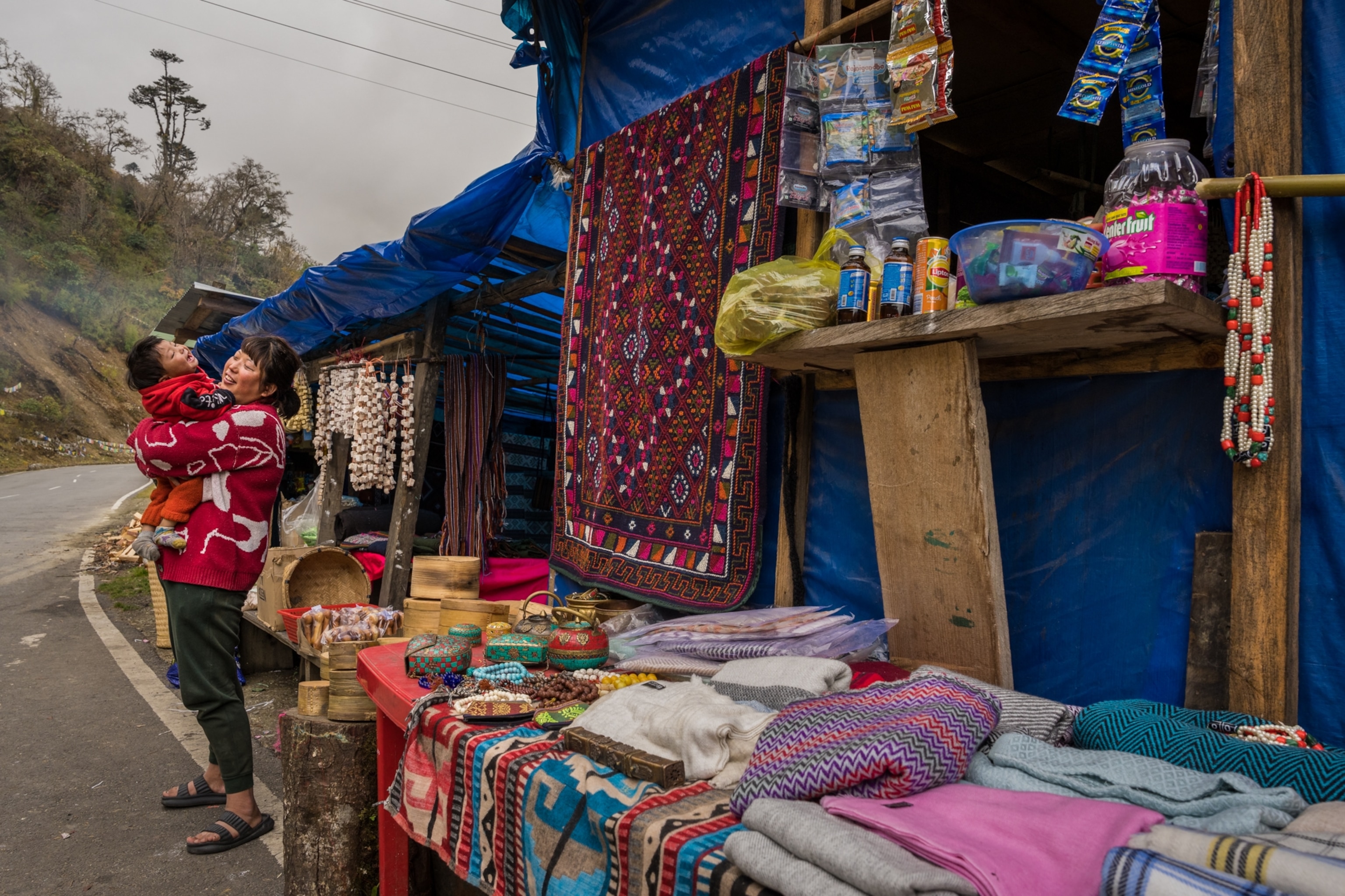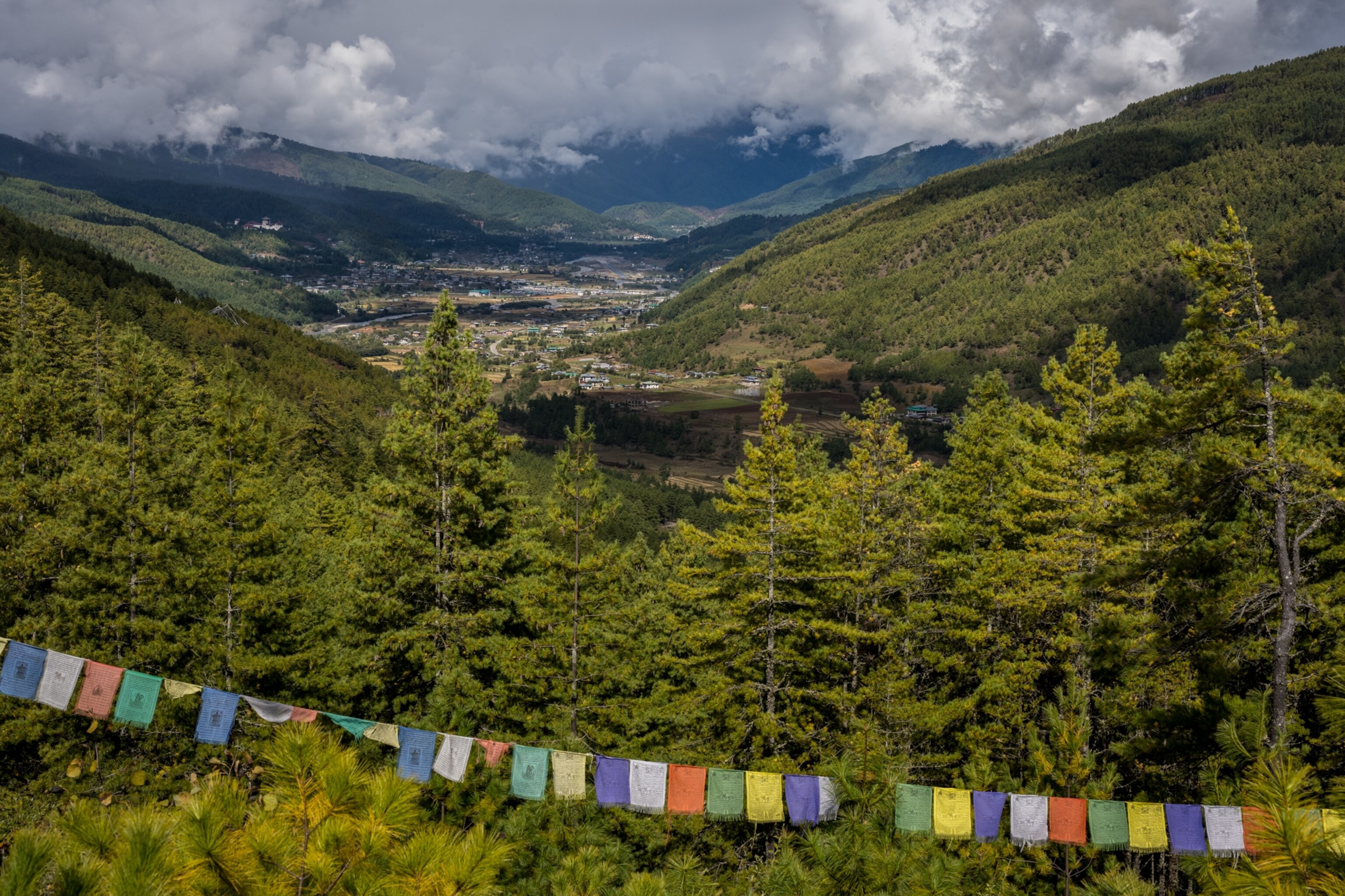
See the relentless beauty of Bhutan—a kingdom that takes happiness seriously
A new 250-mile trail lures tourists away from popular peaks through dense forests, ancient fortresses, and terraced rice paddies.
For the traveler it is the stuff of dreams: a relentlessly beautiful walk, stitching together deep forested valleys and idyllic villages, in one of the most enchanting countries in the world. For many people in Bhutan, meanwhile, it is a symbol of rebirth, and of reckoning.
On September 28, Prince Jigyel Ugyen Wangchuck inaugurated the Trans Bhutan Trail (TBT), a new 250-mile trekking route, at what felt like a fateful moment for Bhutan. A few days earlier, the east Himalayan kingdom, sandwiched between giant neighbors China and India, reopened its borders following a two-and-a-half-year closure during the COVID-19 pandemic. But the return of foreign visitors also resurfaced a familiar question: How much should Bhutan let the outside world in?


One part of the strategy has arrived in the form of more barriers to entry. The “sustainable development fee,” a daily tourist tariff, has tripled from $65 to $200. The TBT constitutes another part. Bisecting almost the entire country from Haa in the west to Trashigang in the east, the trail is conceived to draw visitors away from the popular western valleys, areas which, prior to the COVID-19 lockdown, were beginning to become overwhelmed. Instead, the trail is designed to lure tourists to outlying regions, where a dearth of opportunity has seen aspirational young people leaving the agricultural hinterlands to pursue jobs in the towns or overseas.
In this context, the TBT is not merely a new addition to Bhutan’s roster of spectacular walks. It is a statement of intent. Its architects hope it will become a cornerstone of Bhutan’s continuing efforts to balance cultural and environmental conservation with economic prosperity.
“This is by no means just a tourist trail,” says Sam Blyth, founder of the Bhutan Canada Foundation, a Toronto-based NGO, who conceived the idea in 2018. “It’s one of Bhutan’s lost treasures.”
Forests and fortresses
Last month, I joined guide Kinley Wangmo in a primordial woodland of hemlock, cedar, and rhododendron, on a section of the Trans Bhutan Trail just east of the country’s capital, Thimpu.
This section of the route, from the Dochu La pass down to the village of Toeb Chandana, typifies the landscape that the TBT is designed to showcase: not the Bhutan of high snows, but the foothill country of ancient fortresses, Buddhist monasteries, and gewogs, constellations of traditional homesteads and terraced rice paddies. Most of the trail’s 28 stages run through the dense forests, both coniferous and deciduous, that cover 71 percent of the country.

The path dropped into a sharply incised gorge. Every tree branch was festooned with moss and translucent ferns. Joro spiders with yellow- and black-striped abdomens sat motionless in lattices of cobweb at the trailside.
That day the only sound was bird and cricket-song. But there was a time when this path would have resounded with foot traffic. The TBT follows the route of what was once Bhutan’s central artery, a thoroughfare for traders, monks, and garps, fleet-footed runners carrying messages between its 20 districts, or dzongkhangs.
(This new trail reveals the wonders of Armenia.)
In the 1960s, when the current king’s grandfather initiated Bhutan’s first tentative phase of modernization, the construction of an east-west highway rendered the trail redundant, and the old path fell into disuse. Since 2019, and especially during Bhutan’s 30-month closure for COVID, 900 furloughed workers and a thousand volunteers reconstituted its entire length, clearing vegetation, building timber bridges, and daubing white waymarkers onto tree bark.
For Kinley Dorje, whom I met later that day at the temple of Chimi Lhakhang, the path represented a chance to rediscover Bhutan’s myths and memories. The first time the 65-year-old had come to this shrine, he was a babe-in-arms, carried by his parents from Paro along the trail I had just walked. Now he plans to retrace that childhood journey. “I couldn’t do it this year because I have a sore leg,” he said. “But next year I plan to walk it with friends.”

The following day, we woke in a TBT campsite beneath the village of Thinleygang, heavy rain hammering the tent canvas. The residue of Cyclone Sitrang, which had caused havoc when it made landfall in Bangladesh, now squatted over Bhutan’s central valleys.
Though we had intended to continue walking towards Punakha, the logistical setup of the trail enabled an easy change of itinerary. Groups that book through the official Trans Bhutan Trail agency are allocated a driver who transports luggage to the next night’s lodgings—and who can also ferry hikers to the next stage. This allows travelers to choose which stages they’d like to hike and which to drive, based on trail difficulty, sights in the region, or, as in my case, inclement weather.

As driver Tashi Wangchuk steered us further east, into Bumthang province, the steep forests gave onto open pastures, like a rumpled sheet being gently tugged flat. Yaks in half-formed winter coats ruminated on the tussock grasses. On the outskirts of Jigme Singye Wangchuck National Park, a hundred-strong troupe of grey langurs scrutinized us from the roadside.
When the clouds finally lifted the next morning, we headed for the hamlet of Gyetsa, where stage 16 of the TBT led us on a steady climb through blue pine. The outside world might associate Bhutan with mountains, but these forests cover most of its protected land; national parks make up half of the country’s area. This profusion of carbon-sequestering trees, alongside a vital hydropower industry—Bhutan’s biggest export—underpins its claim to be the world’s only carbon-negative country.
The upheaval behind ‘Gross National Happiness’
Beneath the serene stereotype of cultural integrity and “Gross National Happiness”, Bhutan is wrestling with social upheaval, like anywhere else. The capital, Thimpu, is undergoing a construction boom. Wangmo told me that her husband had recently taken a job in bitcoin, “a project for the King.”
In the north, towards the Tibetan border, transhumant herders are abandoning the old lifestyle of yak-driving to harvest cordyceps roots, a parasitic fungus, coveted in China for its supposed invigorating properties, which is worth three times its weight in gold. “The herders used to travel by pony,” Wangmo said. “Now some of them travel by chopper."
Tourism is in transition too. The new $200 daily tourist tax places Bhutan beyond the means of many prospective travelers. The country has always been a bellwether for the “high-value, low-impact model,” and high-end international resorts already have a toehold here. The country’s most expensive lodgings charge $2,000 a night.

(Can travel transform cultural attitudes?)
Nevertheless, prior to COVID-19, the growing tourist influx was reaching capacity. In 2019, when visitor numbers reached 316,000, the existing infrastructure of rustic three-star hotels, built up since the first tourists arrived almost 50 years ago, creaked under the demand. Roads snarled with processions of tour buses, amid fears that Bhutan might be on the road to emulating the overtourism of Nepal.
“Monuments were overrun. Locals couldn’t get into Tiger’s Nest,” says Carissa Niamh, of Tourism Bhutan, referring to the cliffside monastery in the Paro Valley that is Bhutan’s poster child. “Something had to change.”
The tax increase is an attempt to recalibrate the sweet spot, as the government seeks to balance the economic benefits of tourism with cultural and environmental conservation.
“There is anxiety, yes, but I see opportunity as well,” Jamyang Chhopel, the owner of Yangkhil Resort, in Trongsa, told me. “Under the old rules, everything would come through an agent. Now we can take bookings directly.”
The trail crossed an 11,600-foot ridgeline, transitioning to broadleaf woodland. Necklaces of jade-colored lichen hung from maple branches. Then the trees opened out onto an extraordinary scene: the Jakar Dzong, perched on a promontory.
Such spectacles, commonplace in Bhutan, seem all the more bewitching when you approach them on foot, more still when you have done so without encountering another soul. Whether this remarkable nation can sustain such magic in the face of encroaching modernity remains to be seen. This trail, at least, is one for the ages.
You May Also Like
Go Further
Animals
- What La Palma's 'lava tubes' tell us about life on other planetsWhat La Palma's 'lava tubes' tell us about life on other planets
- This fungus turns cicadas into zombies who procreate—then dieThis fungus turns cicadas into zombies who procreate—then die
- How can we protect grizzlies from their biggest threat—trains?How can we protect grizzlies from their biggest threat—trains?
- This ‘saber-toothed’ salmon wasn’t quite what we thoughtThis ‘saber-toothed’ salmon wasn’t quite what we thought
- Why this rhino-zebra friendship makes perfect senseWhy this rhino-zebra friendship makes perfect sense
Environment
- What La Palma's 'lava tubes' tell us about life on other planetsWhat La Palma's 'lava tubes' tell us about life on other planets
- How fungi form ‘fairy rings’ and inspire superstitionsHow fungi form ‘fairy rings’ and inspire superstitions
- Your favorite foods may not taste the same in the future. Here's why.Your favorite foods may not taste the same in the future. Here's why.
- Are the Great Lakes the key to solving America’s emissions conundrum?Are the Great Lakes the key to solving America’s emissions conundrum?
- The world’s historic sites face climate change. Can Petra lead the way?The world’s historic sites face climate change. Can Petra lead the way?
History & Culture
- Hawaii's Lei Day is about so much more than flowersHawaii's Lei Day is about so much more than flowers
- When treasure hunters find artifacts, who gets to keep them?When treasure hunters find artifacts, who gets to keep them?
- Meet the original members of the tortured poets departmentMeet the original members of the tortured poets department
- When America's first ladies brought séances to the White HouseWhen America's first ladies brought séances to the White House
Science
- Should you be concerned about bird flu in your milk?Should you be concerned about bird flu in your milk?
- Here's how astronomers found one of the rarest phenomenons in spaceHere's how astronomers found one of the rarest phenomenons in space
Travel
- Are Italy's 'problem bears' a danger to travellers?Are Italy's 'problem bears' a danger to travellers?
- How to navigate Nantes’ arts and culture scene
- Paid Content
How to navigate Nantes’ arts and culture scene - This striking city is home to some of Spain's most stylish hotelsThis striking city is home to some of Spain's most stylish hotels
- Photo story: a water-borne adventure into fragile AntarcticaPhoto story: a water-borne adventure into fragile Antarctica






